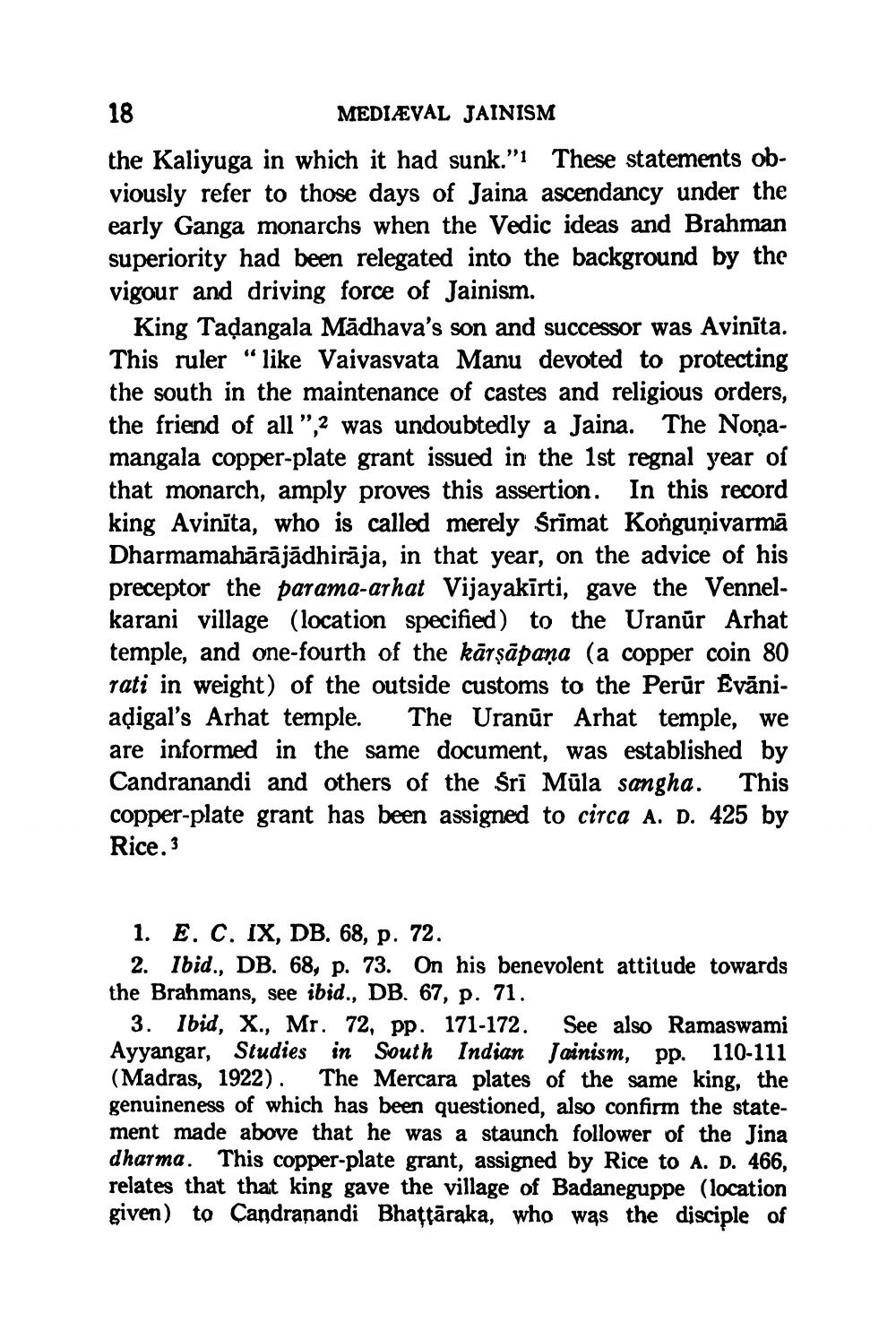________________
18
MEDIÆVAL JAINISM
the Kaliyuga in which it had sunk."1 These statements obviously refer to those days of Jaina ascendancy under the early Ganga monarchs when the Vedic ideas and Brahman superiority had been relegated into the background by the vigour and driving force of Jainism.
King Tadangala Mādhava's son and successor was Avinita. This ruler "like Vaivasvata Manu devoted to protecting the south in the maintenance of castes and religious orders, the friend of all ",2 was undoubtedly a Jaina. The Noņamangala copper-plate grant issued in the 1st regnal year of that monarch, amply proves this assertion. In this record king Avinita, who is called merely Śrīmat Konguņivarmā Dharmamahārājādhirāja, in that year, on the advice of his preceptor the parama-arhat Vijayakīrti, gave the Vennelkarani village (location specified) to the Uranür Arhat temple, and one-fourth of the kārşāpaņa (a copper coin 80 Tati in weight) of the outside customs to the Perūr Evāniadigal's Arhat temple. The Uranür Arhat temple, we are informed in the same document, was established by Candranandi and others of the Śrī Mūla sangha. This copper-plate grant has been assigned to circa A. D. 425 by Rice. 3
1. E. C. IX, DB. 68, p. 72.
2. Ibid., DB. 68, p. 73. On his benevolent attitude towards the Brahmans, see ibid., DB. 67, p. 71.
3. Ibid, X., Mr. 72, pp. 171-172. See also Ramaswami Ayyangar, Studies in South Indian Jainism, pp. 110-111 (Madras, 1922). The Mercara plates of the same king, the genuineness of which has been questioned, also confirm the statement made above that he was a staunch follower of the Jina dharma. This copper-plate grant, assigned by Rice to A. D. 466, relates that that king gave the village of Badaneguppe (location given) to Candranandi Bhattāraka, who was the disciple of




